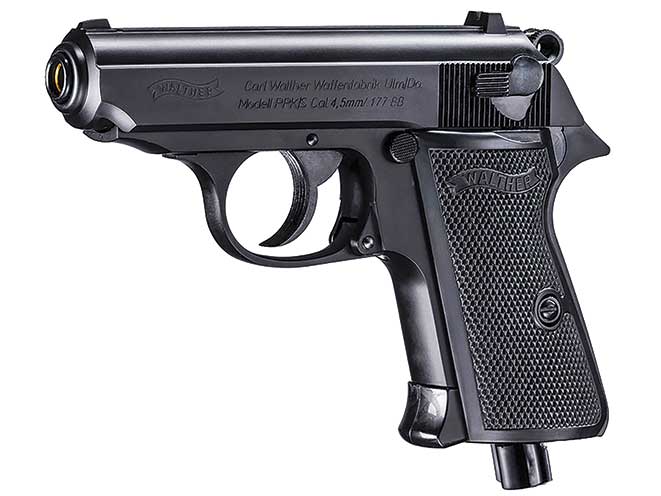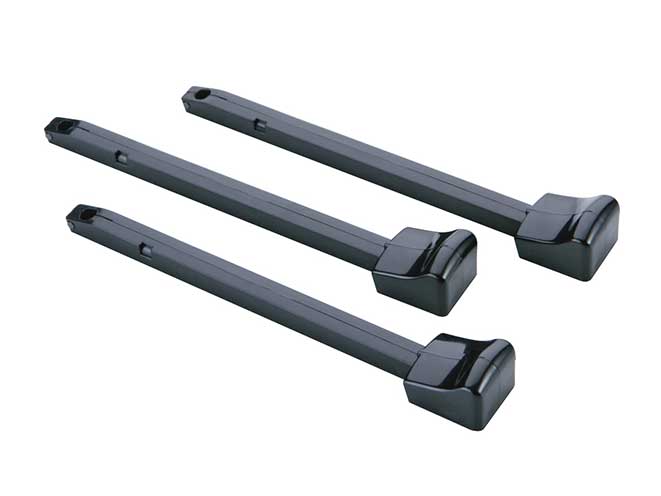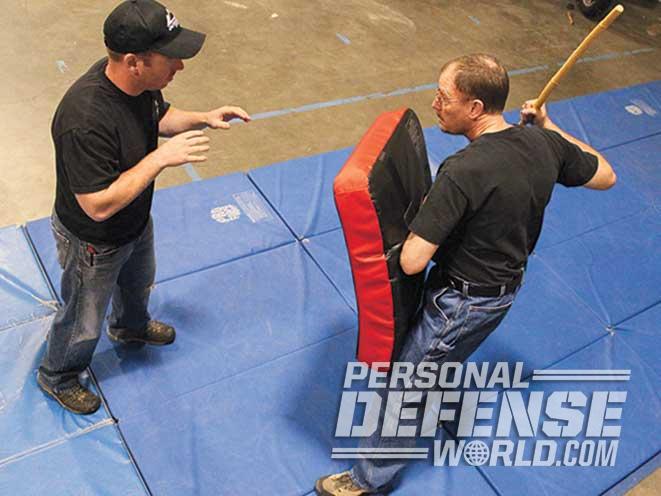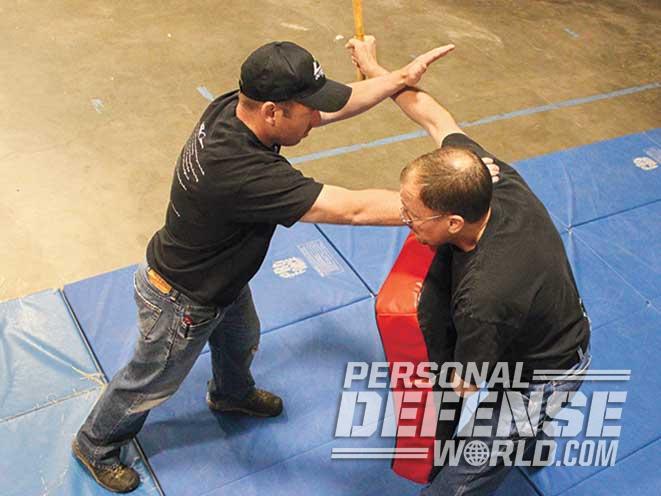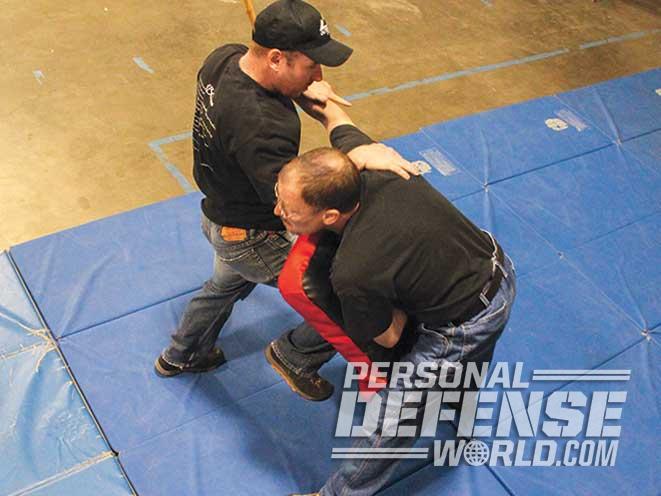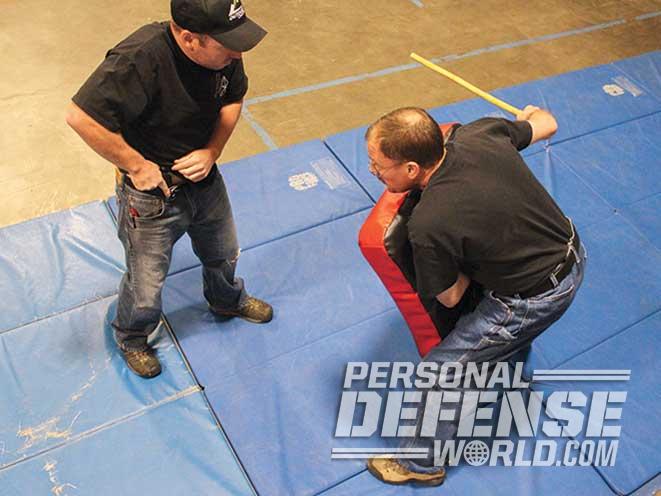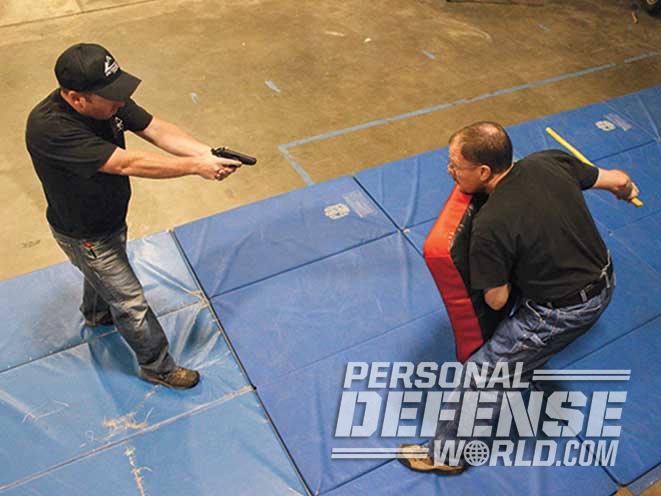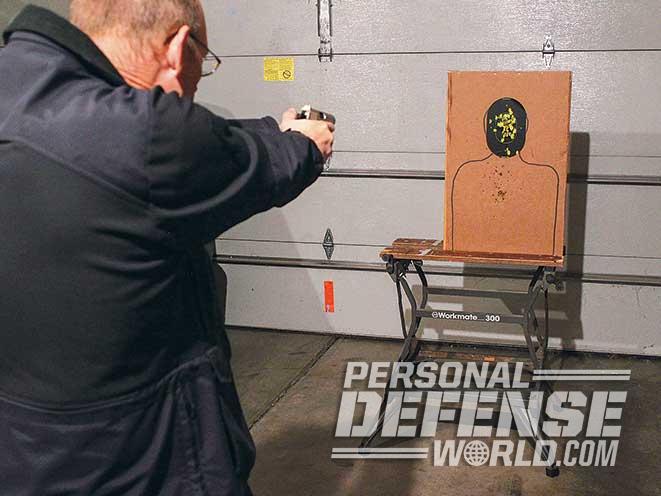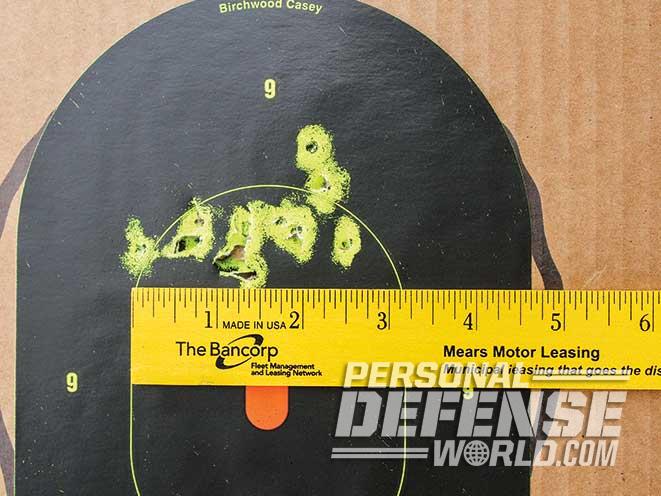Pocket pistols offer tremendous advantages when it comes to compactness and convenience of carry. However, their small size also makes them more difficult to draw and shoot, and their ballistic performance is typically less potent than their full-sized brethren. Having less gun means that you’ll need more skill to use them effectively in self-defense, and that means lots of practice for both shooting skills and proper tactics. Unfortunately, that type of practice is easier said than done. Sure, you can go to just about any range and practice basic marksmanship on a 2D target. However, if you want to hit your target empty-handed a few times—meaning you step off line to create distance, draw from your pocket, shoot the target while moving dynamically and do it all in diminished light—your list of shooting venues shrinks dramatically. So what’s the answer? One useful option that I’ve found is to supplement my live-fire training with a .177-caliber Walther PPK/S airgun from Umarex.
Realistic Trainer
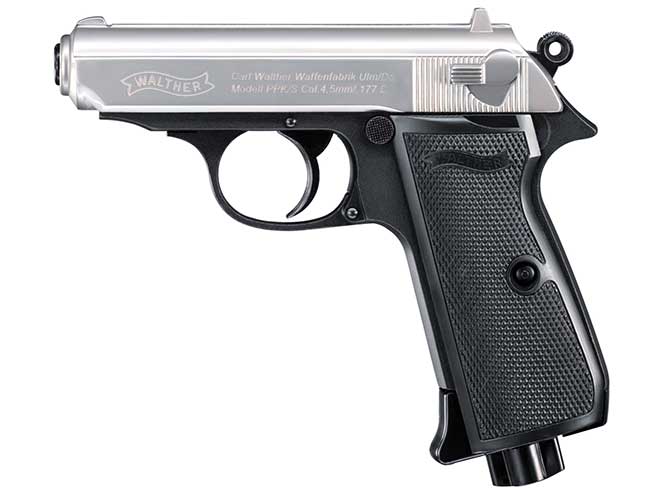
Advertisement — Continue Reading Below
There are lots of BB guns out on the market, and while all of them offer some degree of benefit as training tools, some are far better than others. For shooters who carry pocket pistols, the Umarex PPK/S is excellent for a number of reasons.
First of all, it faithfully replicates the size and shape of a Walther PPK/S, so if that’s your preferred carry gun, you’re golden. If you don’t carry a PPK/S, the Umarex pistol still accurately represents the basic size and handling characteristics of many popular pocket pistols and fits into the same carry holsters that accommodate them. So even if it’s not an exact clone of your carry gun, it’s the next best thing.
Another advantage of the Umarex PPK/S is its weight. Constructed primarily of cast metal parts, when loaded with a C02 cartridge and a full 15-round magazine of .177-caliber BBs, the Umarex PPK/S tips the scale at a respectable 21.1 ounces. This not only gives it the heft and feel of a real pistol, but makes it significantly more durable than competing BB and airsoft guns made mostly of plastic.
Advertisement — Continue Reading Below
The greatest benefit of the Umarex PPK/S, however, is its realistic semi-automatic blowback action. Every time you squeeze the trigger, the slide cycles and cocks the exposed hammer—just like the real thing. Amazingly, if you “limp wrist” it and grip the gun too loosely, it will hold you accountable by refusing to cock the hammer to fire another round. Whether that is a purposeful design feature or not, it adds an additional degree of realism.
The Umarex PPK/S is powered by inexpensive, readily available 12-gram C02 cartridges. To install a cartridge, place the gun on “safe” and remove the gun’s left grip panel, which is held in place by a spring-steel clip. Place a drop of lube on the tip of the cartridge and insert it into the gun. Then tighten the hand screw in the butt of the grip to pierce and seat the cartridge before replacing the grip panel.
The PPK/S is fed by long, narrow magazines that hold up to 15 BBs. Unfortunately, this is one aspect of the design that is not accurate to the live firearm, so magazine changes are not a viable training skill set. In my opinion, this isn’t a major concern, however, since magazine changes with any pocket pistol are a high-risk, low-reward proposition. If you shoot your pocket pistol dry and haven’t solved your problem, you’re typically better off using it as an impact weapon or transitioning to something else. If you do consider reloads with your pocket pistol viable, resign yourself to practicing them as a separate skill.
Advertisement — Continue Reading Below
The other inaccurate aspects of the Umarex PPK/S design are its trigger action and safety. Real PPK/S pistols feature a double-action (DA) trigger mechanism that cocks and drops the hammer with a single pull. The Umarex PPK/S has a single-action (SA) trigger, so the hammer must be manually cocked before firing. Similarly, actual PPK/S pistols feature a slide-mounted safety that decocks the hammer. While the safety of the real gun’s design is cast into the Umarex airgun to give it an authentic look, it does not function. Instead, the airgun’s functional safety is a lever located on the reverse (left) side of the gun’s frame. In the “safe” position, it disengages the trigger to prevent it from firing, but does not decock the hammer. Lowering the hammer must be done in the “old school” manner by safely controlling it as the trigger is depressed.
Practical Accuracy

The Umarex PPK/S has a smoothbore barrel, so it is not exactly a target pistol. In my testing, which involved three different examples of the pistol, groups shot from a rest at a distance of 15 feet averaged about 3 to 4 inches. All three guns shot near the point of aim of their fixed sights or slightly high.
Advertisement — Continue Reading Below
Using fresh C02 cartridges and 5.1-grain steel BBs, the muzzle velocities of all three guns consistently averaged around 250 fps. Powerful enough for punching holes in cans and other traditional plinking targets, it’s also enough to break skin and has the potential to cause serious injury. As such, the Umarex PPK/S—like all airguns launching steel BBs—should never be shot at another person or used for force-on-force training when loaded.
The muzzle velocity of the PPK/S remains constant for about 80 to 100 shots with a fresh C02 cartridge. After that, the BBs begin to slow down until eventually there isn’t enough gas to cycle the action. Nevertheless, you get a lot of shooting—and value—from a single cartridge.
Although it doesn’t completely replicate all the functions of its firearm counterpart, the Umarex PPK/S is a very useful training tool for pocket pistol carriers. One of the most basic but critical skills of using a pocket pistol defensively is actually drawing from a pocket or concealment holster and getting initial hits on target. As simple as this may sound, this process is not allowed at many public pistol ranges. However, with an Umarex airgun and a suitable target, you can practice to your heart’s content in the privacy of your own basement, garage or backyard.
Advertisement — Continue Reading Below
For my purposes, the PPK/S replicates the basic size of a Glock 26 carry pistol. I start by loading the pistol and working the slide to chamber a BB. I then manually lower the hammer, take the safety off and holster the airgun. With the gun in the holster, I then cock the hammer so I can draw and immediately fire the gun by squeezing the trigger—just like with a Glock. Although the airgun is in SA mode in the holster, its trigger take-up is long and deliberate enough to simulate the Glock’s trigger and allow for safe training.
- RELATED STORY: Gun Review – Umarex .177 Uzi BB Carbine
Once this manual of arms is familiar, it’s easy to work lots of repetitions of drawing from concealment and getting shots on target. This type of practice not only hones the basic mechanics of drawing and shooting, but it also allows you to sort through the details of clearing jackets and other cover garments during that process. And, since the PPK/S’ action must cycle properly to prevent a misfeed, you’ll learn how to avoid things like impinging the slide movement with your jacket, a poor grip or, as noted earlier, “limp wristing” with a poor grip.
As your skills improve, you can progress from draw-and-shoot fundamentals to incorporate other critical, but often infrequently practiced, CCW skills. For example, against an assailant armed with a contact weapon, you’ll want to guard with your non-dominant hand as you draw and shoot from a weapon-retention position. You’ll also want to incorporate off-line movement, empty-hand striking and the use of immediate-response “bridging” weapons like tactical pens or pepper spray to earn the opportunity to draw and shoot. Again, doing these things at a typical public range is strictly forbidden, but with a little imagination and an Umarex PPK/S, it’s no problem.
Advertisement — Continue Reading Below
Because pocket pistols are often less potent than their full-sized counterparts, achieving decisive stopping power with them requires precise shot placement backed by aggressive, close-range tactics. Again, a pocket-pistol-sized airgun that offers realistic blowback action and the ability to train whenever you want in the privacy of your own home is ideal for developing this type of skill.
Unlike the sterile, two-dimensional world of typical square ranges, real attacks happen in dynamic, 3D environments populated by innocent bystanders. If forced to defend yourself against an assailant who is positioned in front of no-shoot targets, your best bet might be to take a knee and shoot at an upward angle that would hit him effectively but shoot over them. On a conventional live-fire range, that would throw rounds over the berm. In your garage with an appropriately positioned backstop, it’s excellent training.
The primary requirement for all these training activities—besides the airgun itself—is a good backstop that is large enough to catch any stray BBs and designed to capture them without allowing them to ricochet. One simple, versatile solution is to cut a piece of 0.5-inch plywood about 2 feet wide and 3 feet long and frame it on one side with 2x4s on the edge. Put a piece of Styrofoam insulation in the back and staple a piece of corrugated cardboard over the front to keep the BBs from bouncing out. Mount the backstop to a frame or hang it from a wall and you’re in business.
Advertisement — Continue Reading Below
Street-Ready Skills

The real defensive use of a pocket pistol is likely to involve a lot more than just drawing and shooting. At close range against a determined attacker, you may have to integrate the use of the gun with empty-hand tactics or at the very least dynamic movement that allows you to avoid injury while you get rounds on target. The best way to train for these types of tactics is through force-on-force training with a live partner.
High-level force-on-force training typically involves the use of Simunitions, or similar marking rounds, and is restricted to law enforcement, the military or professional trainers with access to the necessary guns and protective gear. For the average civilian, such training can be hard to come by. However, with the Umarex PPK/S you can safely engage in very valuable skill training with a minimum of equipment.
Advertisement — Continue Reading Below
- RELATED STORY: Marks of the Legend – The Umarex Walther P.38
By simply removing the magazine from the PPK/S and ensuring that it is completely unloaded, you make it the equivalent of a blank-firing pistol. When the trigger is squeezed, the hammer still falls and the slide cycles, but no projectile leaves the barrel. This allows you to safely engage in draw-and-fire drills with a live, moving partner. By incorporating safe training knives, wiffle bats and other props, you can develop realistic training scenarios that allow you to respond to the initial attack with empty-hand techniques and/or movement, draw the gun under the pressure of an ongoing attack and operate the trigger. In the process, you also get to experience all the Murphy’s Law realities of getting an imperfect grip, tangling your hand in your jacket, impinging the action of the slide, etc. More importantly, you learn how to work through those realities, addressing and solving problems on the fly and adapting to a dynamic situation.
The realism afforded by this application of Umarex airguns has made them go-to tools in many of the scenarios we do on The Best Defense TV series. However, I can’t emphasize strongly enough that safety must always be paramount. Airguns should never be used to shoot BBs at another person. If you choose to incorporate unloaded airguns into force-on-force training, you must pay extreme attention to safety and treat your airguns with the same level of respect that you do real firearms.
The Umarex PPK/S airgun is an incredibly versatile training tool for pocket pistol carriers. With a suggested retail price under $100, you really can’t afford to train without one.
For more information, visit umarexusa.com.
This article was published in ‘Pocket Pistols’ #186. For information on how to subscribe, please email subscriptions@
